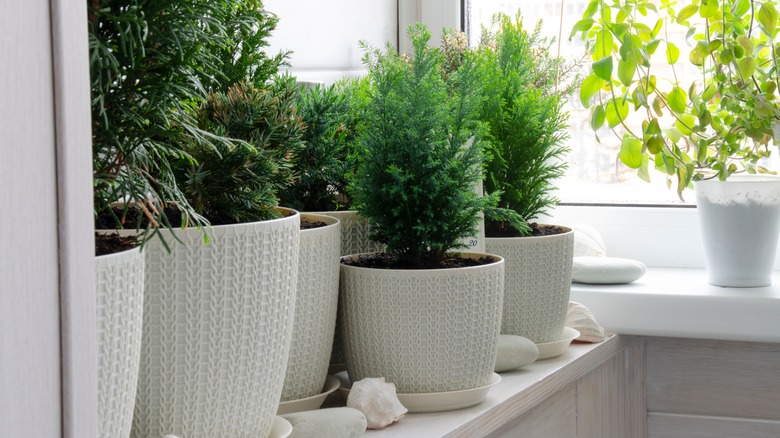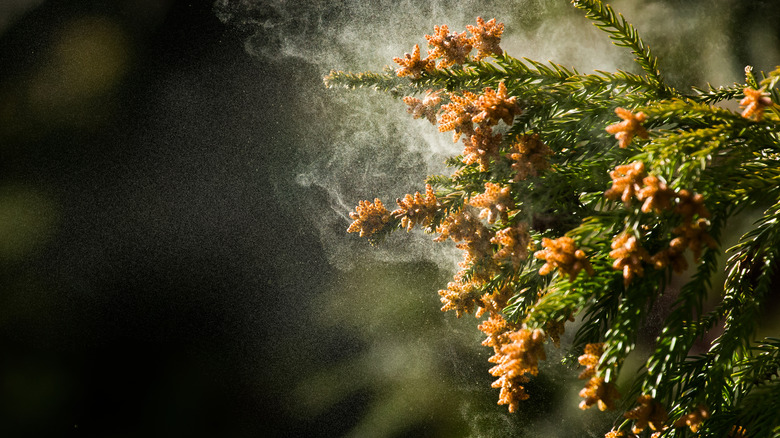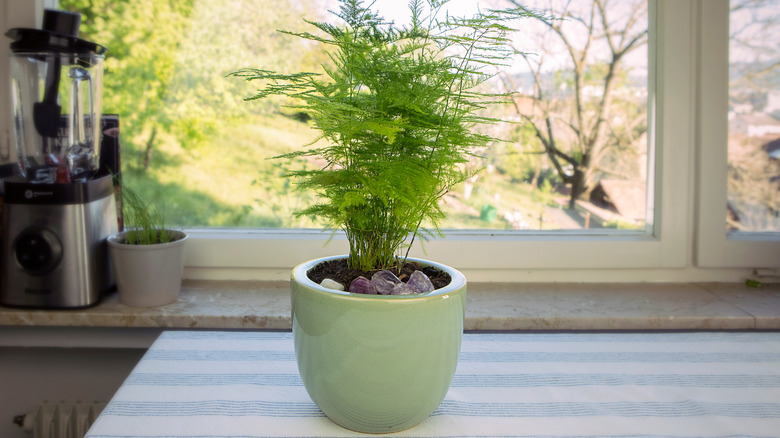Why You May Want To Think Twice Before Growing A Juniper Indoors
The common juniper is one of the most widespread tree populations in the world and has the largest geographical range of all woody plants. Juniper ranges span from the tip of Alaska across the globe to Northern Asia and Japan. Their low-maintenance branches, rich bluish color, and soft, bright fragrance make juniper trees one of the best evergreen shrubs to make your landscaping look great all year. It's not very common to see full-scale juniper trees indoors, but many bonsai trees are actually mini junipers!
These fragrant and lush trees may seem like a tempting addition to your houseplant collection, but you may want to do a bit more research before investing in a juniper tree for inside your home. According to a scientific review published in Annals of Allergy, Asthma & Immunology, juniper trees, which are sometimes called "cedar trees," are a major cause for allergic rhinoconjunctivitis. In fact, juniper can be just as irritating as ragweed, one of the worst-known allergenic types of pollen.
Junipers are great for privacy and foliage outdoors, but bringing them inside could be a mistake you'd come to regret. Here's why a juniper in your home may bring more harm than joy, including other complications for growing junipers indoors, and some clever alternatives to get a similar houseplant look without all the struggle and sniffles.
Juniper is loaded with pollen
The main reason you may want to hold off on growing junipers indoors is their high pollen output. When grown indoors, junipers are usually cultivated into bonsai trees, but if you're not careful when selecting a juniper for your bonsai, you could end up with a "male" tree that releases highly irritating pollen into your home. In fact, juniper trees, also known as mountain cedar, are the major culprit behind cedar fever, a condition that causes congestion, itchy eyes, sneezing, sore throat, and more. Cedar fever occurs when there is too much pollen in the air for your body to handle, so keeping a juniper plant indoors is a surefire way to trap all that pollen and risk getting sick.
If you have any pets in your house, juniper may bother your furry friends, too, as this plant is mildly toxic to dogs and cats. Ingesting parts of the leaves, bark, or berries can cause abdominal pain, nausea, diarrhea, and vomiting in animals. Cats, in particular, are very sensitive to the phenols and terpenes present in juniper and other similar plants that include pines and true cedars. Pets don't even have to ingest the plant to experience negative effects. Simply inhaling the pollen or other chemical components from juniper can cause respiratory irritation in pets.
More juniper concerns and smart alternatives
Besides dropping lots of pollen and being highly irritating for people with allergies, juniper plants don't grow best indoors. They'll thrive much better and grow faster when they're outdoors in full sunlight, though they can tolerate living indoors for a few years if placed in bright sunlight. They also require well-draining soil. Keeping juniper plants in pots leaves them susceptible to root rot, so you must ensure your soil stays permeable and that the drip pan is changed promptly after watering. If you need yet another reason to think twice about this pollen-heavy plant, a bonsai juniper is one plant you should never keep in your home, according to feng shui. This is because bonsais are intentionally pruned and stunted, symbolizing a lack of personal growth.
Luckily, there are some allergen-friendly and feng shui-friendly plant alternatives with a similar look to juniper. Rosemary offers a light and fresh scent and will thrive in a bright southern window, while palm trees such as the parlor palm give that tree-like look without all the pollen.


